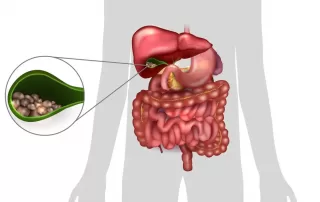The gallbladder is a small, pear-shaped organ located beneath the liver on the right side of the abdomen. Its primary function is to store and concentrate bile, a digestive fluid produced by the liver. Bile helps digest fats in the small intestine during the digestive process. When food, particularly fatty food, enters the small intestine, the gallbladder releases bile through the bile ducts into the intestine.
Several common conditions can affect the gallbladder:
- Gallstones: These are solid particles that form from bile cholesterol and bilirubin in the gallbladder. Gallstones can vary in size and may cause severe pain, known as biliary colic, if they block the bile ducts.
- Cholecystitis: This condition involves inflammation of the gallbladder, often due to gallstones blocking the cystic duct. Symptoms include severe abdominal pain, fever, and nausea.
- Biliary Colic: Intense pain occurs when a gallstone temporarily blocks the bile ducts. The pain typically happens after eating fatty foods and can last from a few minutes to several hours.
- Gallbladder Polyps: These are growths that protrude from the lining of the gallbladder. While most are benign, some can be cancerous and may require monitoring or removal.
- Gallbladder Cancer: Although rare, gallbladder cancer can occur and often does not show symptoms until advanced stages, making it harder to treat.
The treatment for gallbladder conditions varies. For gallstones and cholecystitis, the most common treatment is surgical removal of the gallbladder (cholecystectomy). This procedure is often done laparoscopically, which is minimally invasive and allows for quicker recovery. Non-surgical treatments, such as medications to dissolve gallstones, are less commonly used.

